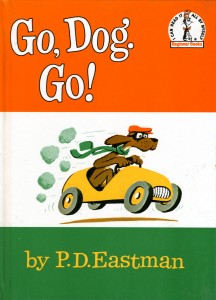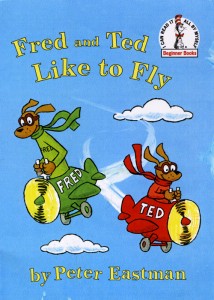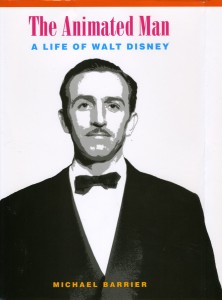Books 12 Jun 2007 08:00 am
Tony Goes Flying
- Tony Eastman is one of New York’s animation jewels. He’s been an animator/director for as long as I can remember. He’s produced animation films and animated for others. He’s aslo worked with me on a couple of projects; he’s quite a talent with a sensitive style and a smile in his work.
 Tony is the son of Phil Eastman. We animation people know him as the co-author with John Hubley of Brotherhood of Man, one of the films that started UPA. To quote the introduction to the published script:
Tony is the son of Phil Eastman. We animation people know him as the co-author with John Hubley of Brotherhood of Man, one of the films that started UPA. To quote the introduction to the published script:
- THE SCRIPT of Brotherhood of Man and the illustrations from that animated cartoon are essentially an end product of a pamphlet called Races of Mankind which was written in 1943 by Drs. Ruth Benedict and Gene Weltfish, anthropologists of Columbia University. It was designed for presentation to men of the armed forces as an antidote to racial prejudice. This film has been made by United Film Productions at the instance of the UAW-CIO.
However, Phil Eastman as P.D. Eastman is known to the rest of the world as the genius behind all those early-reader books for young kids which were published by Random House.
Likewise, Tony Eastman is following in his father’s footseps using the name
Peter Eastman for the children’s books he is authoring. 
This is to celebrate his newest book which just hit the market: Fred and Ted Like To Fly, the follow up to his successful book, Fred and Ted Go Camping.
Beginner books are particularly difficult to do in that the vocabularly is more limited, the stories are simpler, and it takes enormous creativity to keep them smart and sharp. I very much like the twists that Peter “Tony” Eastman has taken to the form and feel that he has taken the scepter left behind by his father, and brought it to new heights.
It looks like Dr. Seuss, who is probably more popular than even in his lifetime, has some serious competition. Are these characters going to transfer to animation anytime soon?
Congratulations to Tony. He deserves some great success with these new children’s classics he’s writing.
- Speaking of books, I’ve always enjoyed it when authors review other authors’ works. Give me John Updike reviewing any book in the New Yorker, and I’m ready to fly. When animators write books there’s often something special going on. Recently, I’ve read two such reviews of Mike Barrier’s new book, The Animated Man: A life of Walt Disney.
John Canemaker has an interesting review about to be published in Print Magazine. It’s quite astute and an in depth evaluation. It’s only available in print editions, so look for it to hit the newsstands soon.
David Levy, ASIFA East‘s President has a column in the new newsletter sent out to members. This hasn’t yet appeared on the ASIFA East website (I’m sure it will soon.) However, David gave me permission to post it here. Since I think he has some intelligent comments to make I’m pleased to showcase it.
 A life of Walt Disney by David Levy
A life of Walt Disney by David Levy
- I’ve read a handful of biographies on Walt Disney over the years, and I can say with certainty that Michael Barrier‘s new book, The Animated Man: A life of Walt Disney (University of California Press) is the very best. Although the book is laden with quotes pulled from interviews with those who knew and worked with Walt, the anchor of the book is Barrier’s research based conclusions. The author pulls much of his best information from official documented studio notes taken from meetings that demonstrate Disney’s role in shaping his studio’s art.
Here are just some of the book’s many revelations that just about blew me away.
1. The reality that Oswald The Lucky Rabbit, Disney’s pre-Mickey character series, was not a project born of inspiration. In fact, Universal ordered the series by description, asking for a rabbit character named Oswald the Lucky Rabbit. As Barrier tells it, Disney arrived back at his studio with the news that his crew would be switching production from Alice to Oswald. It reminded me of a factory switching product manufacturing based on a new order, which in essense, is what it was.
2. The idea that departure of Ub Iwerks from Disney was actually a plus and a necessary incident in the development of animation at the Disney studio.
3. The fact that little or nothing in Disney’s early pre-Mickey Mouse’s history shows any evidence that he would become the artist/industry leader that he became. Disney’s early works are as crude and filled with short cuts as any other silent era animation producer.
4. Disney features from Cinderella onwards were no longer pre-scored beyond song sequences. For exam ple, in an early feature such as Pinocchio, the music that accompanied Jiminy Cricket’s dash across the street would be pre scored, in other words, written and recorded before any animation was done.
The story artist, sequence director, and lead animator would work with the track and the resulting animation was connected to the sound track in a ay that could not be achieved by post scoring the animation. Scoring a film after the picture is complete is the way live action films are made and that is one of the reasons why all the Disney features from Cinderella through Jungle Book are a far less rich experience.
5. The suggestion that the two Disney feature films that assigned animators to characters the way actors are cast as characters were all
the more better because of it. For evidence, seek out Fred Moore‘s seven dwarf animation and Bill Tytla‘s animation of Dumbo and his mother.
6. The way Barrier connects how Disney’s passions for trains and miniatures paved the way towards his creation of Disneyland. Talk about productive hobbies! Finally, a key theme of the book is that the animation breakthroughs leading up to and including Snow White and the Seven Dwarfs did not really lead the Disney artists beyond that. In a form of arrested development, key animation innovators such as Tytla, Babbit, Ferguson, and Moore, were all replaced by younger higher-quality draftsman, Nine of which, would become the fabled “Nine old men”. While the draftsmanship improved under the Nine old men, a life-sucking literalness also crept into the animation. Each of us can decide for themselves if what was gained was worth more than what was lost. But, of course, nothing is really ever lost, just possibly a sleep for a while (Just like Snow White, herself). Pick up this book today! It’s your summer read.
And, if you just can’t get enough Michael Barrier, check out his great Web site: www.michaelbarrier.com. I also highly recommend his terrific commentaries on the four Warner Brothers cartoon DVD collections.
Personally, I’m just about creeping up to the end of the book. As soon as I do, I’ll give some comments of my own which certainly won’t be as observant or as articulate. Thanks to David Levy for allowing me to reprint this. It should also appear on the ASIFA East site soon.

on 12 Jun 2007 at 11:34 am 1.Dave Levy said …
Hi Michael,
Thanks for posting this. Since I wrote this review, Bill Lorenzo told me about a reader of Barrier’s Hollywood Cartoons book that ripped out all the Disney themed pages. Apparently, the reader was upset at Barrier’s critical approach to Disney’s art/work. Hearing about that story shocked me because I had the opposite reaction in reading Hollywood Cartoons. For me, it was a treat to read such an informed opinion and it actually enhanced my enjoyment of the Disney films and achievements. In my eyes, the history and advancement of the art/craft of animation is like a relay race in which different studios/individuals passed the baton down the field. Disney did the heavy lifting during the 1930s.
on 12 Jun 2007 at 12:22 pm 2.LNG said …
To each reader his own, I suppose, but far too few original insights appear in books on animation history. Barrier’s are always well considered and backed by thorough research.
on 12 Jun 2007 at 12:31 pm 3.Joshua Wilson said …
Numbers one and Three of this reviewers points could also be discovered by reading Kaufman and Merritt’s “Walt in Wonderland,” which is also a fantastic book, and far more interesting than I suspected it would be before I bought it. I look forward to eventually reading Mike Barrier’s Disney book. I am now rereading “Hollywood Cartoons.” I submitted a review of that book to him which is on his website, as well as a subsequent back-and-forth set of responses. I now find it humorous when a certain camp dismisses Barrier as a stuffy critic (and non-artist, crime of crimes) and then appeals for people to just “watch the films,” at once implying that the films self evidently argue against Barrier and implying that Barrier himself never watched them. How silly.
on 19 Jun 2007 at 3:20 pm 4.Tony Eastman said …
Dear Michael,
Thanks so much for your kind words regarding my father, me and my new book!
Just to add a little more history… Fred and Ted first appeared in “Big Dog… Little Dog – a bedtime story” by P.D. Eastman in a paperback format. (The characters also appear in “What Time Is It?” and on the cover of “The Alphabet Book”, both also by P.D.E.) “Big Dog…” was reissued in a hardcover format, with more pages, so I changed some layouts and added a few new pages to flesh it out to the proper length. This then lead to the sequel, “Fred and Ted Go Camping”, which was written and illustrated by me.
It would be interesting to think about animation with these characters… perhaps after I do a couple more books!
Thanks again,
Tony